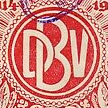Related Research Articles

The Free Association of German Trade Unions was a trade union federation in Imperial and early Weimar Germany. It was founded in 1897 in Halle under the name Representatives' Centralization of Germany as the national umbrella organization of the localist current of the German labor movement. The localists rejected the centralization in the labor movement following the sunset of the Anti-Socialist Laws in 1890 and preferred grassroots democratic structures. The lack of a strike code soon led to conflict within the organization. Various ways of providing financial support for strikes were tested before a system of voluntary solidarity was agreed upon in 1903, the same year that the name Free Association of German Trade Unions was adopted.
The General Commission of German Trade Unions was an umbrella body for German trade unions during the German Empire, from the end of the Anti-Socialist Laws in 1890 up to 1919. In 1919, a successor organisation was named the Allgemeiner Deutscher Gewerkschaftsbund, and then in 1949, the current Deutscher Gewerkschaftsbund was formed.
The International Union of Woodworkers (IUW) was a global union federation bringing together unions representing wood carvers, carpenters and joiners.
The Central Union of Stone Workers of Germany was a trade union representing stone masons in Germany.
The Union of Bookbinders and Paper Workers of Germany was a trade union representing workers involved in manufacturing paper and binding books in Germany.
The Union of Lithographers, Lithographic Printers and Kindred Trades was a trade union representing printers in Germany. It was sometimes referred to as the Senefelder Union, after Alois Senefelder, the inventor of lithography.

The Central Union of Shoemakers of Germany was a trade union representing people working in the shoemaking industry in Germany.

The General Union of Public Sector and Transport Workers was a trade union representing workers in various industries in Germany.

The German Construction Workers' Union was a trade union representing building workers in Germany.
The Central Union of Bakers and Confectioners was a trade union representing workers in bakeries and related trades in Germany.
The Central Union of Butchers and Kindred Trades of Germany was a trade union representing butchers and abattoir workers in Germany.
Theodor Bömelburg was a German trade unionist and politician.
The Union of Stone Setters, Pavers and Kindred Trades was a trade union representing paviours and people in related trades, in Germany.
The Union of German Restaurant Workers was a trade union representing workers in hotels and restaurants in Germany.

The Central Union of Employees was a trade union representing white collar, private sector workers in Germany.
The Central Union of Construction Workers was a trade union representing building labourers in Germany.
The Central Union of Potters was a trade union representing pottery workers in Germany.
The Union of Dockers of Germany was a trade union representing dock workers in Germany.
The Central Union of Commercial Employees was a trade union representing white collar commercial workers in Germany.
The Union of Bakers and Related Workers of Germany was a trade union representing workers in the baking industry in Germany.
References
- 1 2 Theilberg, Rudolf (1931). Deutscher Baugewerksbund. ADGB. pp. 352–357. Retrieved 5 June 2020.CS1 maint: discouraged parameter (link)
- ↑ Sassenbach, Johannes (1926). Twenty-five years of international trade unionism. Amsterdam: International Federation of Trade Unions. p. 97–98.
- ↑ Brunner, Louis (1905). Die Deutschen Gewertschaften 1891-1904 (PDF). Berlin: General Commission of German Trade Unions. p. 9. Retrieved 16 June 2020.CS1 maint: discouraged parameter (link)